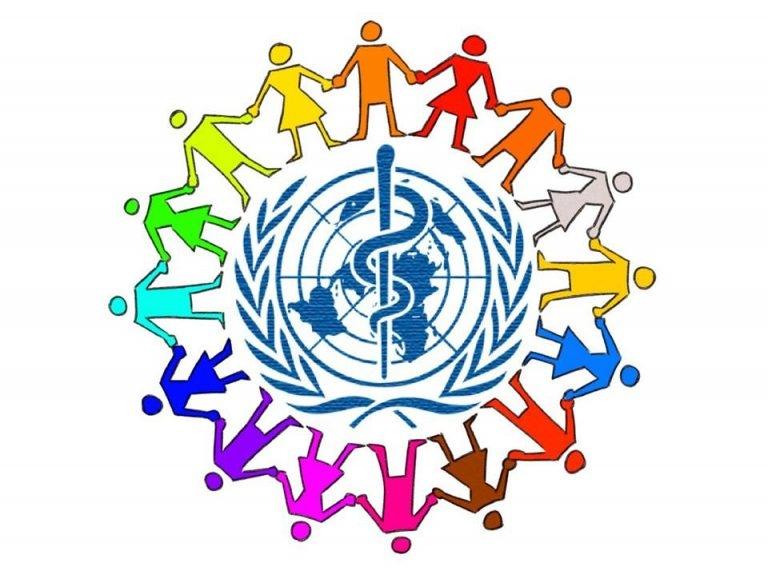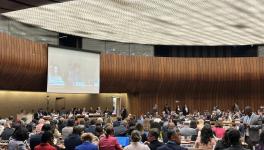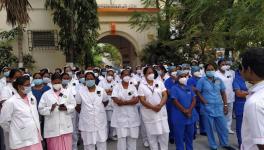No Fencing Away For ‘Private-Collaborators’ : the New WHO Director General Pacifies the Private Sector

Image Coutesy: Peoples Health Movement/ Facebook
The article below is part of the ‘WHO-Watch’ program which is an effort of the People’s Health Movement WHO-Watch program. The program works towards democratising global governance for health and involving young activists in following the governing body meetings of the World Health Organisation -- the Executive Board meeting in January and the World Health Assembly in May -- every year.
The World Health Assembly (WHA) is the decision-making body of World Health Organisation. It is attended by delegations from all WHO Member States and focuses on a specific health agenda prepared by its Executive Board. The primary functions of the WHA are to determine the policies of the Organization, appoint the Director-General, supervise financial policies, and review and approve the proposed programme budget.
The 71st meeting of the World Health Assembly (WHA) kicked off in Geneva, Switzerland on Monday, May 21. The new WHO Director General Dr Tedros immediately reassured the private sector that they would not be ‘fenced out’ of partnerships at the highest level of global health policy making. The World Health Organization (WHO) governing body will be meeting for a week to decide on the political direction of the institution. Key issues on the agenda will include the Organisation’s General Program of Work, medicines, vaccines, and non-communicable diseases.
As a global network of organisations working for the right to health, the People’s Health Movement (PHM) follows closely the WHA through its team of WHO Watchers. Through WHO watch, a team of PHM activists attends WHO committee meetings to contribute to deliberations along with country representatives. The team will be developing policy briefs, following key health debates, advocating with delegates and making statements (see here).
Key issues on the agenda
On the first day of the Assembly, both WHO’s new Director General Dr Tedros Adhanom Ghebreyesus and Mr Paul Kagame, President of Rwanda, gave keynote addresses. Their discussion highlighted some of the big ticket issues that will come up for discussion over the week, but showed the limited perspective from which the WHO attempts to address them.
For instance, electronic-health and related new technologies were discussed as key contributions to improving access to health for many Rwandans. However, there was no acknowledgement of the importance of strengthening health systems in order to ensure that the benefits were accessible across the population. In a statement to the WHA, PHM noted: “Driving mHealth in the direction of serving interests of private corporations, who present this technology as a panacea for struggling health systems, will not only allow access for a few but they will incur excessive draining of resources and thereby weakening health systems”.
In his address, Mr Paul Kagame described the “very important” role of donors, which includes the second biggest donor to WHO – the Bill & Melinda Gates Foundation. This is worrying in the context of the persisting chokehold to which WHO is subjected by its donors. Donors enjoy undue control over the activities of WHO due to the practice of ‘earmarking’ resources for specific work that interests donors. A further worry is Tedros’ statement that “FENSA(Framework for Engagement with Non-State Actor) is not a fence”.
FENSA was adopted at the 69th WHA as a comprehensive policy to regulate WHO’s relations with non-state actors, such as academia, civil society, philanthropies and the private sector. The mandate was for a framework that would protect the WHO from the undue influence of private actors in order to avoid conflicts of interest, and to keep the private sector at arm’s length. However, in the process of negotiations, the framework was diluted to the point that it now allows for partnerships with the private sector. FENSA proclaims that if relationships with the private sector can be managed, then conflicts of interests can be avoided. In reality, it has become a tool to legitimise partnerships with groups that act in the interest of the private sector.
Contrary to Tedros’ assertion that ‘FENSA is not a fence’, PHM and other organisations would remind the WHO that the original function of FENSA was precisely the opposite – that it would act as a fence to protect WHO from private sector influence. This dramatic reframing of FENSA’s function indicates very clearly the intention of the WHO secretariat to further cosy up with private actor and their front organisations. According to the PHM’s policy briefs, the repeated emphasis on the role of the private sector in different documents, including the General Programme of Work, is an open invitation to that sector to begin partnering with the WHO, at the cost of jeopardizing people’s health.
Relevance of Alma Ata
It is ironic that in the same discussion, the DG paid lip service to the continued relevance of the principles contained in the Declaration of Alma Ata of 1978 and lamented the failure of the international community to implement it. The Alma Ata Declaration, endorsed by the world community, explicitly incorporated action on the underlying social and economic roots of ill health, including on the importance of restructuring economic relations towards equality between and within countries. The centrality of comprehensive Primary Health Care in formulating and structuring national health policies and systems was another strong point of the Declaration. Marking the anniversary of the Declaration with a Conference in Kazakhstan, as was announced by Tedros, might not be sufficient to bring global policy making on track to fulfill the promise of Health for All made at that time. The WHO needs to integrate its principles into its overall and specific programmes, starting from ensuring unified health systems that ensure universal access to healthcare becomes a reality, propose PHM activists (See Policy Brief, page 3).
Universal Health Coverage and Universal Health Care: discourse and contentions
Mr Kagame mentioned that 90% of Rwandan population is covered by health insurance, bringing to the fore the contradictions between the narrative of universal health coverage vs universal health care. Building on the emphasis of preventing financial-risk, the idea of “basic health packages” mediated by health insurance, and often provided by private providers, is promoted under the phrase of universal health coverage. On the other hand, universal healthcare is a model which seeks to strengthen, build and improve the public healthcare system. Dr. Tedros’ consent to the statement by the President of Rwanda, and citing Kenya, Brazil, India and Japan as best examples of political commitment to UHC, gives an insight into which one of the approaches will be promoted by the WHO.
Rwanda has been performing well in improving its health indicators, thanks to the expanded range of health personnel, including a large contingent of community health workers. In contrast, both India stands out as a bad performer in terms of its weak health system, and also its model for achieving access to health services, which it is promoting via an insurance-mediated model (see here). Brazil, on the other hand, is witnessing a massive challenge as an increasing role for the private sector in tertiary care is rendering its health system unviable.
Therefore, praising the current condition of these countries, and their commitment to the right to health is a bad choice of country examples. But the fact that Tedros is presenting India and Brazil’s health systems as exemplars of good health systems is problematic. The health policies that the governments are pushing in India is not encouraging because at their root is a dependence on the role of private insurance companies that seek to market universal health care as a route to ensure coverage.
The Invisible Health Workforce
Health workforce is not in the agenda despite its crucial importance. As the Rwanda example illustrates, community health workers (CHWs) are key in the reduction of under 5 mortality (U5R) and improving the maternal mortality (MMR). Also, Rwanda has lauded the central role of women in improving MMR and U5R. However, it is important to recognize that women are employed first in the most informalized occupations. Many CHWs are women who are integrated in the health system as unpaid or low paid and devalued workers, in addition to overwhelming work due to scarce number of CHW and extremely informalised employment conditions. Governments need to recognize CHWs as formal workers, provide for stable and regular wages for all CHWs, and ensure they are given security of tenure.
The above article is compiled with contributions from; Linda Markova (UK), Kriti Shukla (India), Natasha Matthews (UK), Simrin Kafle (Nepal), Dan Owalla (Kenya), Emmanuel Tangumonkem (Cameroon), Alba Lop Girones (Spain), Matheus Falco (Brazil), Sophie Gepp (Germany/UK), Sherif Olanrewaju (Nigeria), Andrew Harmer (UK) and Ana Vračar (Croatia).
This article is part of a series. Read Part 2 here.
Part 3 here.
Part 4 here.
Part 5 here.
Get the latest reports & analysis with people's perspective on Protests, movements & deep analytical videos, discussions of the current affairs in your Telegram app. Subscribe to NewsClick's Telegram channel & get Real-Time updates on stories, as they get published on our website.
























